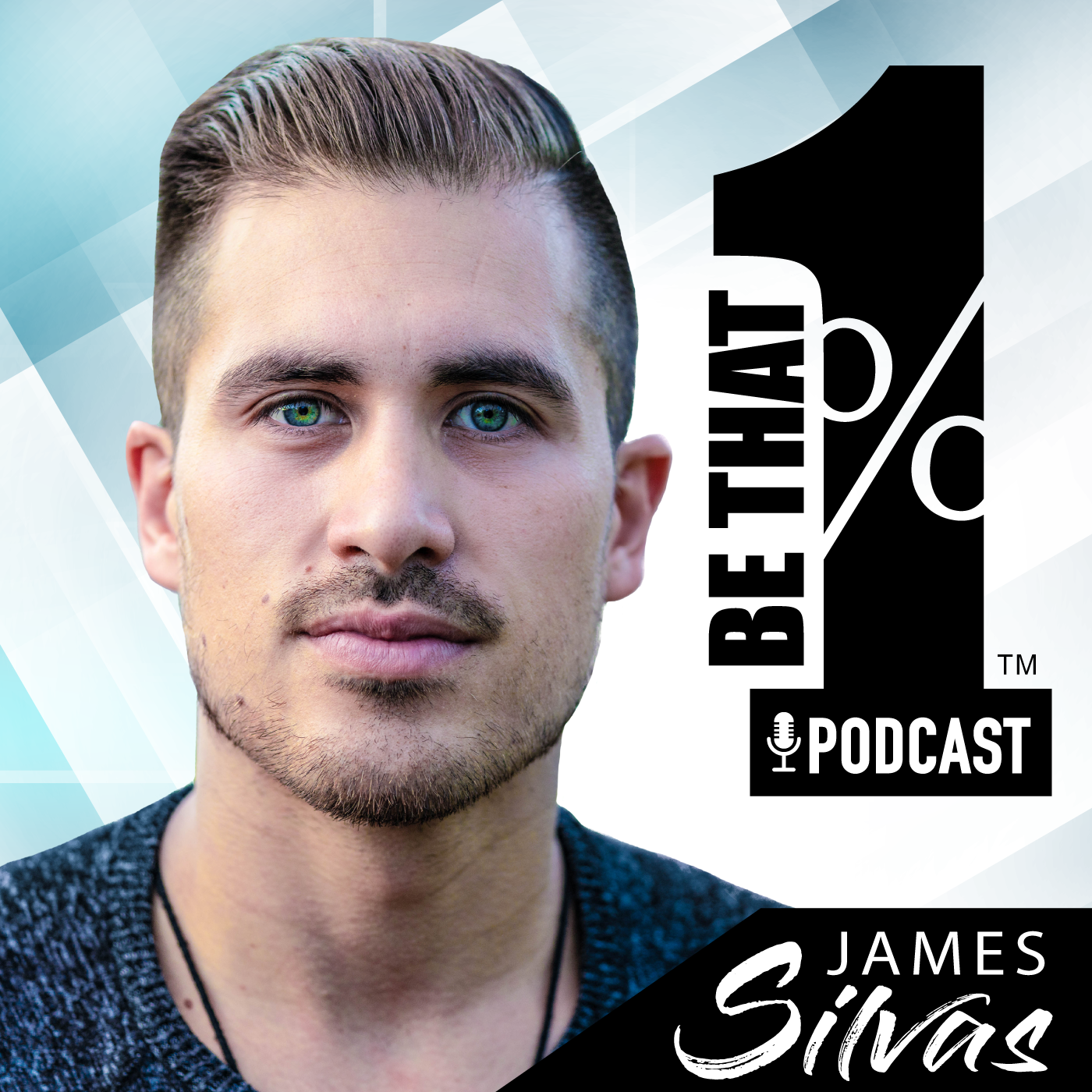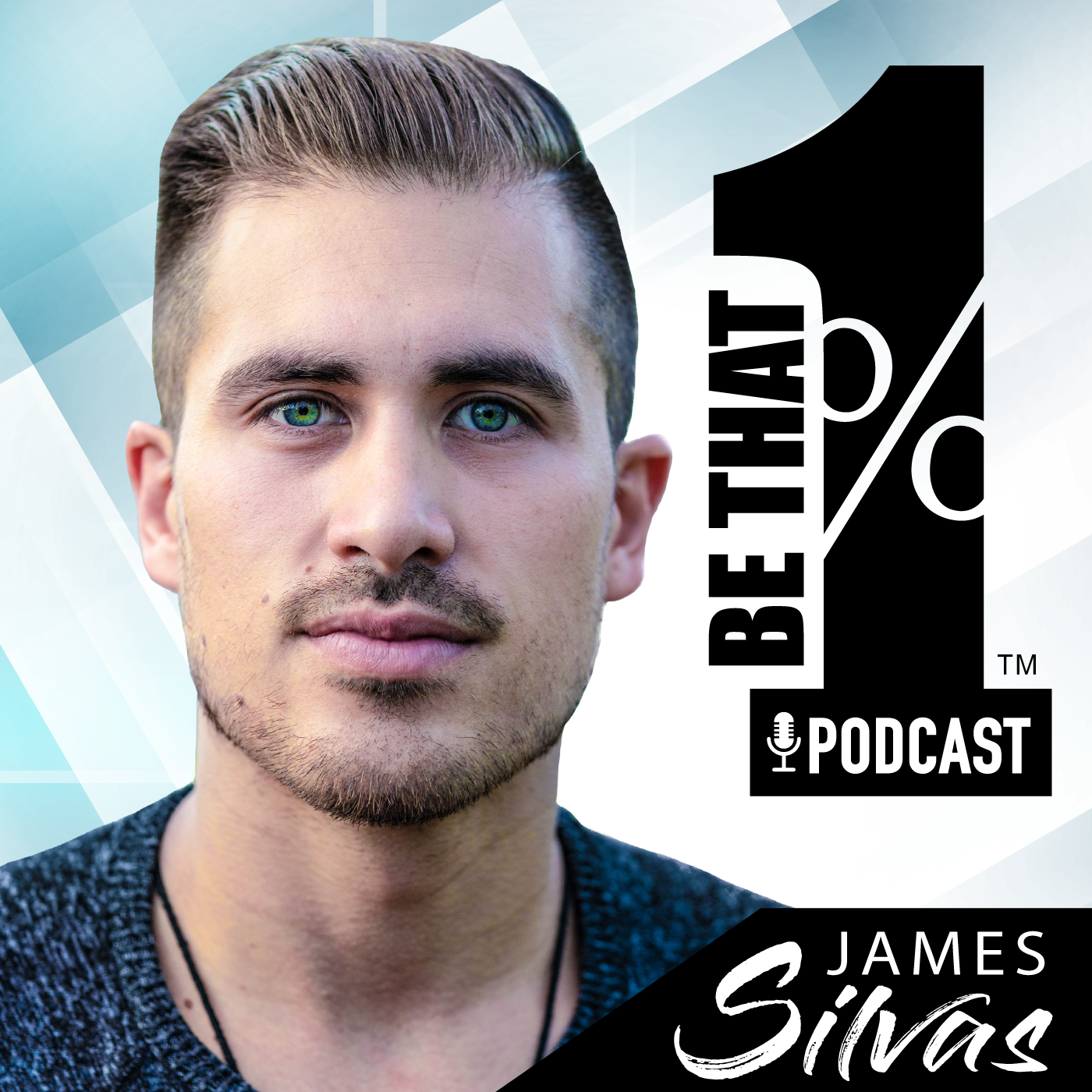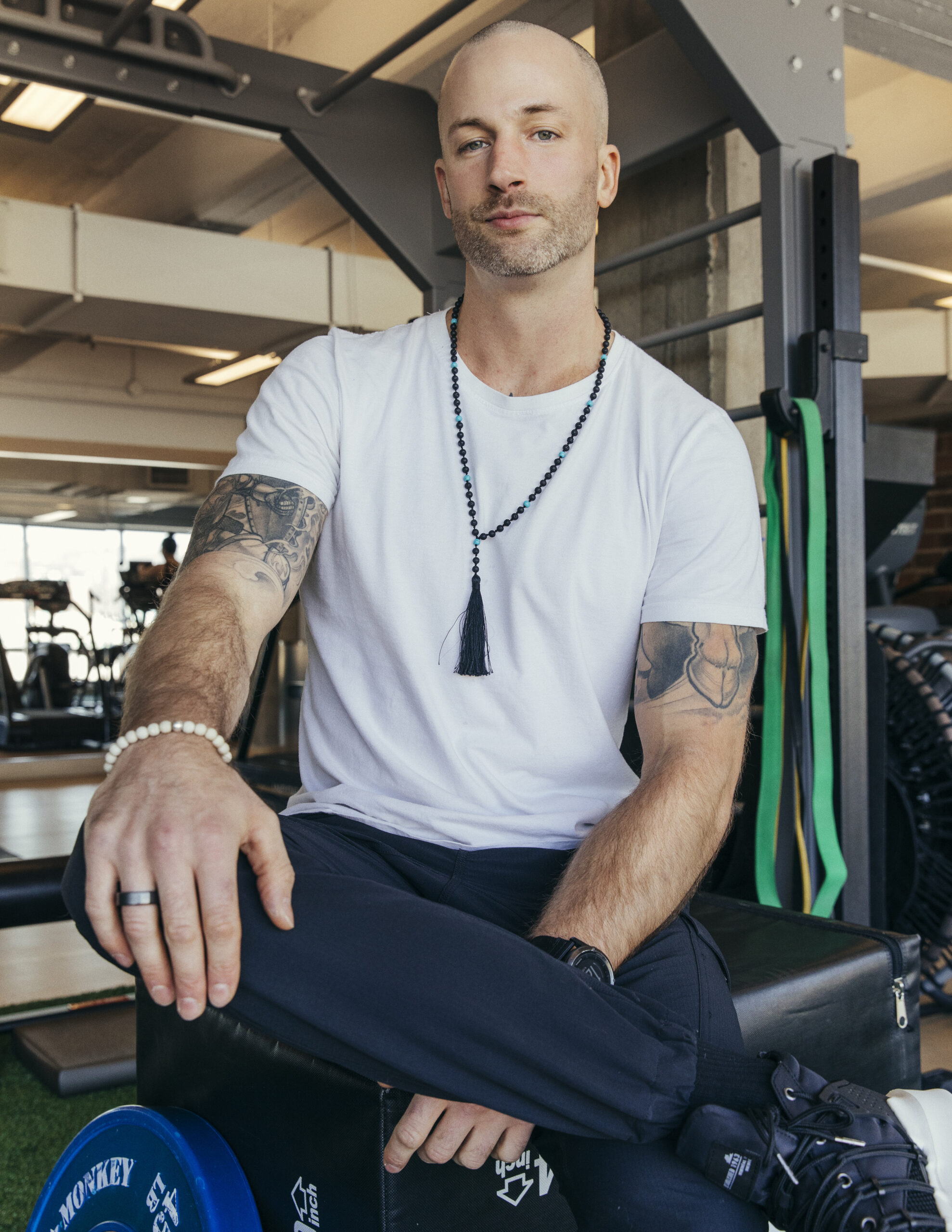Podcast: Play in new window | Download | Embed
Description:
Jesse K. Wright, founder of the Balance The Bar initiative, is a high performance consultant, Amazon best-selling author, coach, and public speaker. His career has spanned over two decades in the team sport culture, including working with organizations in the NBA, NFL, NCAA, and in private sports training.
He has a passion for helping young professionals grow and advance in their careers and lives. Through continuing education resources and private coaching, he seeks to create awareness, recognition, and comprehensive solutions for others in both professional and personal development.
His experiences as a teammate and leader in professional sports, collegiate athletics, and in business have him uniquely positioned to provide guidance for successfully navigating and thriving in today’s challenging, high performance environments.
I wanted to find out what he has learned from the top athletes in the game. What do they do differently, and what characteristics do they cultivate, or bring into the NBA that differentiates from the rest?
Show Topics:
What called Jesse into this profession
What separates the highest-caliber athletes from the rest
Game day routines
An athletes level of obsession
Performance-enhancing supplements
Time management and recovery applied to business
Sympathetic vs parasympathetic
Mindfulness & exercise for stress
Building future leaders
Vulnerability is vital for growth
The symbiotic relationship between touch and connection
Your environment shapes your behavior
Show Links:
Connect with Jesse:
IG: @jessekwright
His company website: Balance the Bar
His book “The Intent is to Grow” is available on Amazon
Connect with James:
jamessilvas.com
Bethatonepercent.com
IG: @james_silvas
Show Notes:
8:40 How Jesse got his start in sports
As a kid, Jesse was the undersized high school football player that wanted to get big and strong to be able to compete and contribute to the team.
“I was small so I joined a powerlifting team in the off season and that was my first exposure to structured, well-planned out strength training. And we retrained with a local deadlift masters champion and he wrote programs for us and exposed us to like my first exposure to high level nutrition and all that stuff. And it was a world where I’m like, this is really interesting. I like it, it pairs right with my passion and love for sports. Like I kind of want to go into this world somewhere. And I sought out programs that had degrees in kinesiology or exercise science or something. And I landed at Temple university.”
14:30 High-caliber athletes
What is the separating factor of the elites of the elites in the NBA? What are the character traits of these top 1%?
“One word, and we can dig into this a little bit more, but one word is consistency, right?
The ability to sustain efforts over time. And I’ll, I’ll apply that first. When you talk about the one percenters I think you should first recognize that anybody that’s in the NBA has already less than a 1% or with respect to their ability to play that game, their genetic athleticism and what they inherited their size, their length, like they were born to be NBA players.
Right. So that, that, that should be the first thing, but it doesn’t mean you have to make it there right there. That’s when you get into like your habits and, you know, your commitment to growing the game and your commitment to building character and everything that comes with team sports and being a great teammate and working your way through whatever that process would be to be discovered to reach that level.”
18:38 Adopting a set routine and repeating it over and over
In the midst of chaos, travel and media, and more, sustaining a successful routine is key.
“So the athlete that is able to find like seek out, find, develop, and sustain a successful routine within that chaos, for a long period of time, not just a fleeting two or three weeks when you’re really motivated or someone crawls in and chews your ass a little bit and says you need a better routine. Like it’s like these guys have adopted probably through some trial and error that maybe I didn’t even see, particularly if we inherited a free agent or somebody that spent some time at another team first, or talking to veterans, right. If it’s a rookie, you know, or a younger guy that hasn’t yet developed his routine, leaning on the experience of older players that have, or that provide some counsel on how to go about and what might work for them. But through all that trial and error, you develop a set routine that you can lean on and find comfort. And repeat that over and over and over, that leads to that1%, cause there’s a lot that goes into being a successful elite level professional athlete.”
22:00 Game day routines
Jesse gives a play-by-play of a typical game day routine.
“Let’s look at game day schedule, right? You’re going to have some form of a shoot around. And then we got to play at seven o’clock at night. Those are two givens. Well, what does the rest of that day look like to prepare you for that game? What time do you wake up your meal timing? Now you get to your registered dieticians and they’re going okay. We should probably set up a game day fueling routine. Right. So what’s that going to look like? And then you go to in the college world academics, you can’t blow off class that day. Right? So let’s, let’s set up a successful routine in and around class and making sure you still acknowledge the study and the student part of your, uh, your career here right now.”
25:25 An athletes level of obsession
James asks Jesse to explain what level of obsession athletes have to have to be this dedicated and consistent.
“Some are not obsessed with it. Some very much are right down to the amount of jumpshots the better player wants to get on a game day, the morning of a game before and after shoot around. I know some players, you have watched some players that will absolutely shoot a set number of three-pointers or even better make a certain number of three-pointers every single game day, morning, every single one. Right. And that’s what psychologically prepares them right now. Let’s go back to your last question. At some point in time, they attached success to shooting or making the amount of three pointers, right?”
27:30 Performance-enhancing supplements
Jesse breaks down the nutritional advice they give athletes to help optimize performance-enhancing supplements.
“A lot of guys lean on caffeine as a stimulant. As a supplier of performance enhancing supplements. A lot of our guys chew gum, some guys will drink coffee, right. There was a bunch of vehicles to deliver that, but what time do you take that? And that, that might come from some advice from someone like me or a registered dietician for the team. It’s like, Hey, we favor this. We think it’s going to be helpful, but let’s make sure we optimize the timing. Cause we don’t want to compromise your sleep at night either. Let’s not take down 200 milligrams of caffeine at 6:30, even though it might help you for the game. It’s going to keep you up until three or four in the morning. Because of our half-life of caffeine.”
30:15 Time management and recovery skills applied business
The time management skills and recovery methodologies Jesse has learned in sports that can be applied to life and business.
“There’s a bunch of health professionals that are going, hey, we need proactive attempts at recovery to drag parasympathetic tone. Right? So let’s work on mindfulness. Let’s work on recovery breathing. Let’s work on all the different 1% recovery modalities. Let’s get some pneumatic compression and let’s, you know, Headspace and let’s talk about cold water immersion, and all these things where we know you’re good at the sweating part. It’s what you’ve been doing, your whole life, stuff that makes you sweat and the stuff that you would, that we would define as injury, risk reduction and performance enhancement everything.
But now let’s talk about the other side to provide real balance, to give you a chance to have real, sustainable sustainability and success within the environment. So you take that model and you say, okay, If the definition of an entrepreneur or a CEO, or just a, a business leader or even an employee, is those that same kind of definition of work, but just in a different way. It’s not going out and playing basketball or putting time into a weight room, or, you know, repeat sprints in a quarter to train your anaerobic cardiovascular system or anything like that.”
35:13 Sympathetic and parasympathetic
Why you need a balance of both to make an impact over the long-term.
“Whether you’re talking meditation or morning reflections and journaling, or mindfulness training or anything else that’s out there you go into sensory deprivation or you do like the cold tubs, recovery breathing. That’s kind of fashionable, even in a business world now for like CEOs and all that stuff.
Like all of that stuff’s great. And you experiment with it, but it all falls under the heading of Again let’s talk parasympathetic. If sympathetic is fight or flight, right, parasympathetic is rest and digest. And that that is a critical piece to balance out the hard work part of it.
And that you truly believe, and you embrace and you internalize that I need both sides of those to have real impact over the long-term.”
35:25 Jesse shares the habits that have greatest ROI for him.
Mindfulness and some kind of exercise are key.
My meditation for at least a six minute blocks. I’m not a person that can spend hours doing it, but I know if I get a six to 12, 18 minute block, that that can reset me. And I do that often enough. I can’t say I do it every day, but I do it often enough for what I’ve found works for me. And then the good old fashioned sweat. You know what I mean, throw around some weights max, to pull up. Right. Make sure that, you know, exercise and all that comes from that too. I never go more than try not to go more than two days without some type of sweating session or, or some type of a bodywork or movement or anything like that.
Again, sometimes it could take the form of going out for a walk or walking the dog or something like that. Or it could be real intense interval work, you know, where you’re actually throwing some music on dripping sweat and, you know, and you hop on a bike and get your repeat Supreme intervals. It takes all different forms.”
38:30 Coaching coaches and building leaders
James asks Jesse what skills are fundamental to being a good coach.
“Interpersonal skills, soft skills, that is what helps bridge that psychological safety, that unifies teams, that strengthens cultures that allows the heartbeat to synchronize within that team that helps them withstand challenge that helps them maintain, a certain level of thinking and being, cause everyone is aware of where everyone’s at, right? And if one thing’s off, everyone’s sensitive to it and they can address it quickly so that the problem gets solved as opposed to all these egos in one room, all in their own silos, being so disconnected that they go off and go out and it shows on the court. Right? So. I just wanted to validate what you were saying about importance of those things.”
49:20 Vulnerability is vital for growth
James discusses the societal issues around vulnerability as a weakness, and how important is for us to embrace and encourage it for the purpose of growth.
“You have maybe leaders or coaches who don’t understand the emotional intelligence side, who aren’t creating the spaces for those conversations to happen. So you just have compound on compound on compound that don’t really give opportunity to open up and talk about things. Um, so I think all those play a factor, but I do, I would agree, or I would state that a team that does have the courage.
To view vulnerability, not as a weakness, but as an opportunity to learn areas for growth and for maximizing their already built skillset can only enhance a team. And I don’t see any downfalls of having those kinds of conversations.”
53:00 The symbiotic relationship between touch and connection
A study on athletes engaging in more touch-points (high-fives, fist pumps, etc) led to higher-winning games.
“Those who touch the most had more psychological safety in their cultures, which led to more of the touching, which led to the release of oxytocin, which is a hormone that bonds people together, deep loyalty trust, deep respect, that then opens up even more conversation about feedback exchange. Here’s what you’re doing, right. Here’s what you’re doing wrong. Got it. I’m not going to take that personal. You care enough about me to tell me that I can now execute on that feedback and now get better. Our team gets better and we just keep rolling. Um, so it’s just funny how, how it all kind of fits together.”
57:30 Your strengths and weaknesses are tied to those around you
These are both internal and external– your strengths and weaknesses are never independent. Your environment shapes your behavior.
“So that’s a really interesting piece that sometimes people don’t necessarily think. That they’re complimentary. Your knowledge of yourself and people’s perceptions of what you identified as strengths and weaknesses and everything, and how they fit with others. And so I’m doing research for the book and reading into like more articles like this and everything. And it’s like, yeah, you know what? That does make sense. Like, those are never your own strengths and weaknesses are never independent. They’re always tied to something to something else and some other individually regularly deal with.”
Suggested listening:
226: Blood, Sweat, and Tears: Building a Business From the Ground Up with Jodi Stabile
192: Busy vs Productive





+ show Comments
- Hide Comments
add a comment